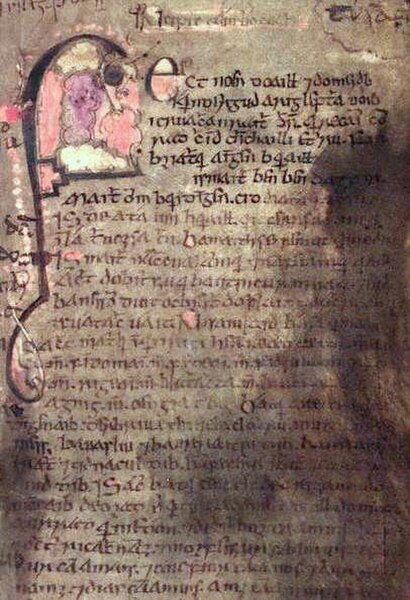Fionn mac Cumhaill, often anglicized Finn McCool or MacCool, is a hero in Irish mythology, as well as in later Scottish and Manx folklore. He is the leader of the Fianna bands of young roving hunter-warriors, as well as being a seer and poet. He is said to have a magic thumb that bestows him with great wisdom. He is often depicted hunting with his hounds Bran and Sceólang, and fighting with his spear and sword. The tales of Fionn and his fiann form the Fianna Cycle or Fenian Cycle, much of it narrated by Fionn's son, the poet Oisín.
Fionn fighting Aillen, illustration by Beatrice Elvery in Violet Russell's Heroes of the Dawn (1914)
Fionn by Beatrice Elvery
"Malvine, Dying in the Arms of Fingal", by Ary Scheffer. The characters are from James Macpherson's epic poem Ossian: "Fingal" is a character based upon Fionn mac Cumhaill, while "Malvina" is the lover of Fingal's grandson Oscar, and cares for Fingal in his old age after Oscar dies.
Irish mythology is the body of myths indigenous to the island of Ireland. It was originally passed down orally in the prehistoric era. In the early medieval era, some myths were transcribed by Christian monks, who heavily altered and Christianised the myths. Irish mythology is the best-preserved branch of Celtic mythology.
Riders of the Sidhe, a 1911 painting of the aos sí or Otherworldly people of the mounds, by the artist John Duncan
Cuchulain in Battle by Joseph Christian Leyendecker, 1911
The Fomorians, as depicted by John Duncan (1912)
Folio 53 of the Book of Leinster. Medieval manuscripts are the main source for Irish mythology and early literature.







